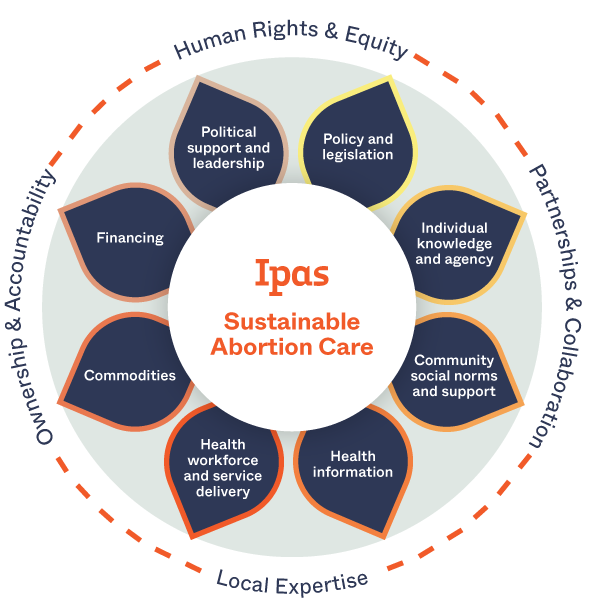Last reviewed: September 23, 2022
Recommendation:
- Clinicians performing vacuum aspiration must inspect products of conception immediately after vacuum aspiration.
- Sending products of conception for routine histopathology evaluation is not recommended.
In practice:
- To improve visualization, products of conception can be rinsed, floated in water, and viewed through a clear dish using a light source from underneath.
- If no products of conception are visible, or less tissue is seen than expected, further evaluation is required.
Strength of recommendation: Strong
Quality of evidence: Very Low
Visual inspection of products of conception
Visual inspection of products of conception is a routine step in vacuum aspiration as recommended by the World Health Organization (WHO, 2022), the Royal College of Obstetricians and Gynaecologists (RCOG, 2022), and the National Abortion Federation (NAF, 2020). Presence of products of conception on visual inspection confirms that the pregnancy was intrauterine and is consistent with successful abortion (Westfall et al., 1998). If products of conception are not seen, the individual should not leave the facility until plans are made to follow local guidelines to exclude the diagnosis of ectopic pregnancy. Immediate examination of the products of conception expedite the diagnosis of ectopic pregnancy and decrease related morbidity and mortality (Goldstein, Danon, & Watson, 1994). In cases where abnormal pathology is suspected, such as molar pregnancy, histopathology may be used in addition to visual inspection.
Sending products of conception for routine histopathology exam does not affect clinical outcomes and increases the cost of abortion (Heath et al., 2000; Paul et al., 2002).
Instructions for visually inspecting products of conception are in Ipas’s Woman-Centered Comprehensive Abortion Care Reference Guide, 2nd edition, page 177 (Ipas, 2013).
Resources
Steps for performing manual vacuum aspiration using the Ipas MVA Plus® and EasyGrip® cannulae – Ipas
References
Goldstein, S. R., Danon, M., & Watson, C. (1994). An updated protocol for abortion surveillance with ultrasound and immediate pathology. Obstetrics & Gynecology, 83(1), 55-58.
Heath, V., Chadwick, V., Cooke, I., Manek, S., & MacKenzie, I. Z. (2000). Should tissue from pregnancy termination and uterine evacuation routinely be examined histologically? BJOG: An International Journal of Obstetrics & Gynaecology, 107(6), 727-730.
Ipas. (2013). Woman-centered, comprehensive abortion care: Reference manual (second ed.) K. L. Turner & A. Huber (Eds.). Chapel Hill, NC: Ipas.
National Abortion Federation. (2020). Clinical Policy Guidelines. Washington, DC: National Abortion Federation.
Paul, M., Lackie, E., Mitchell, C., Rogers, A., & Fox, M. (2002). Is pathology examination useful after early surgical abortion? Obstetrics & Gynecology, 99(4), 567-571.
Royal College of Obstetricians and Gynaecologists. (2022). Best practice in abortion care. London: Royal College of Obstetricians and Gynaecologists.
Westfall, J. M., Sophocles, A., Burggraf, H., & Ellis, S. (1998). Manual vacuum aspiration for first-trimester abortion. Archives of Family Medicine, 7(6), 559-62.
World Health Organization. (2022). Abortion care guideline. Geneva: World Health Organization.
